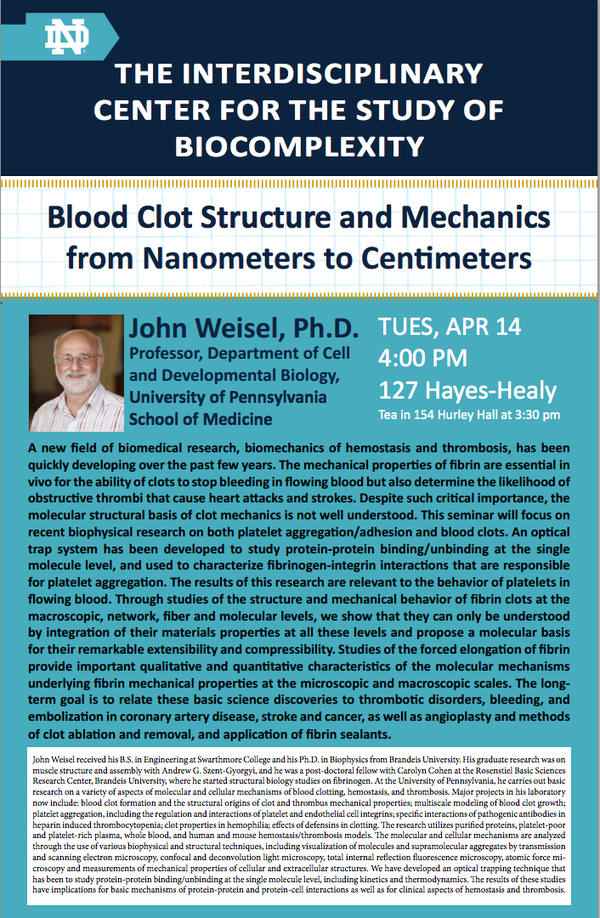
Dr. John Weisel
Department of Cell and Developmental Biology
University of Pennsylvania School of Medicine
Blood Clot Structure and Mechanics from Nanometers to Centimeters
Tues, Apr 14
4:00 - 5:00 PM
127 Hayes-Healy
Colloquium Tea at 3:30 pm in 154 Hurley Hall
Dr. Weisel will also be giving a talk at HCRI on Wed, April 15.
John Weisel, PhD received his B.S. in Engineering at Swarthmore College and his Ph.D. in Biophysics from Brandeis University. His graduate research was on muscle structure and assembly with Andrew G. Szent-Gyorgyi, and he was a post-doctoral fellow with Carolyn Cohen at the Rosenstiel Basic Sciences Research Center, Brandeis University, where he started structural biology studies on fibrinogen. At the University of Pennsylvania, he carries out basic research on a variety of aspects of molecular and cellular mechanisms of blood clotting, hemostasis, and thrombosis. Major projects in his laboratory now include: blood clot formation and the structural origins of clot and thrombus mechanical properties; multiscale modeling of blood clot growth; platelet aggregation, including the regulation and interactions of platelet and endothelial cell integrins; specific interactions of pathogenic antibodies in heparin induced thrombocytopenia; clot properties in hemophilia; effects of defensins in clotting. The research utilizes purified proteins, platelet-poor and platelet-rich plasma, whole blood, and human and mouse hemostasis/thrombosis models. The molecular and cellular mechanisms are analyzed through the use of various biophysical and structural techniques, including visualization of molecules and supramolecular aggregates by transmission and scanning electron microscopy, confocal and deconvolution light microscopy, total internal reflection fluorescence microscopy, atomic force microscopy and measurements of mechanical properties of cellular and extracellular structures. We have developed an optical trapping technique that has been to study protein-protein binding/unbinding at the single molecule level, including kinetics and thermodynamics. The results of these studies have implications for basic mechanisms of protein-protein and protein-cell interactions as well as for clinical aspects of hemostasis and thrombosis.
https://acms.nd.edu/assets/161610/4.14.15_john_weisel_icsb.pdf
